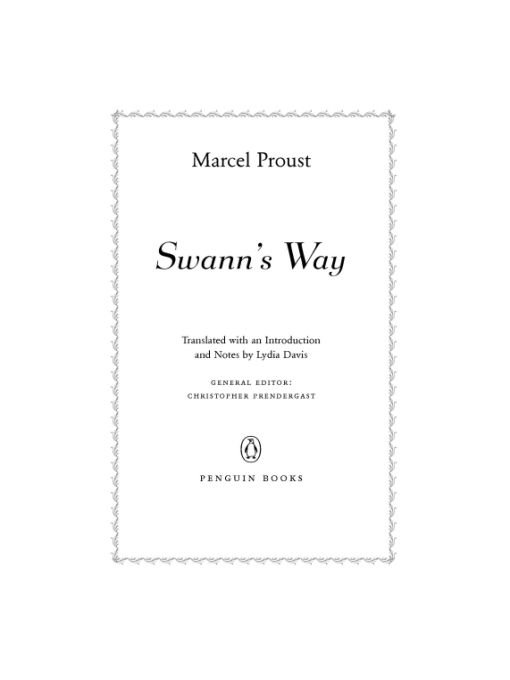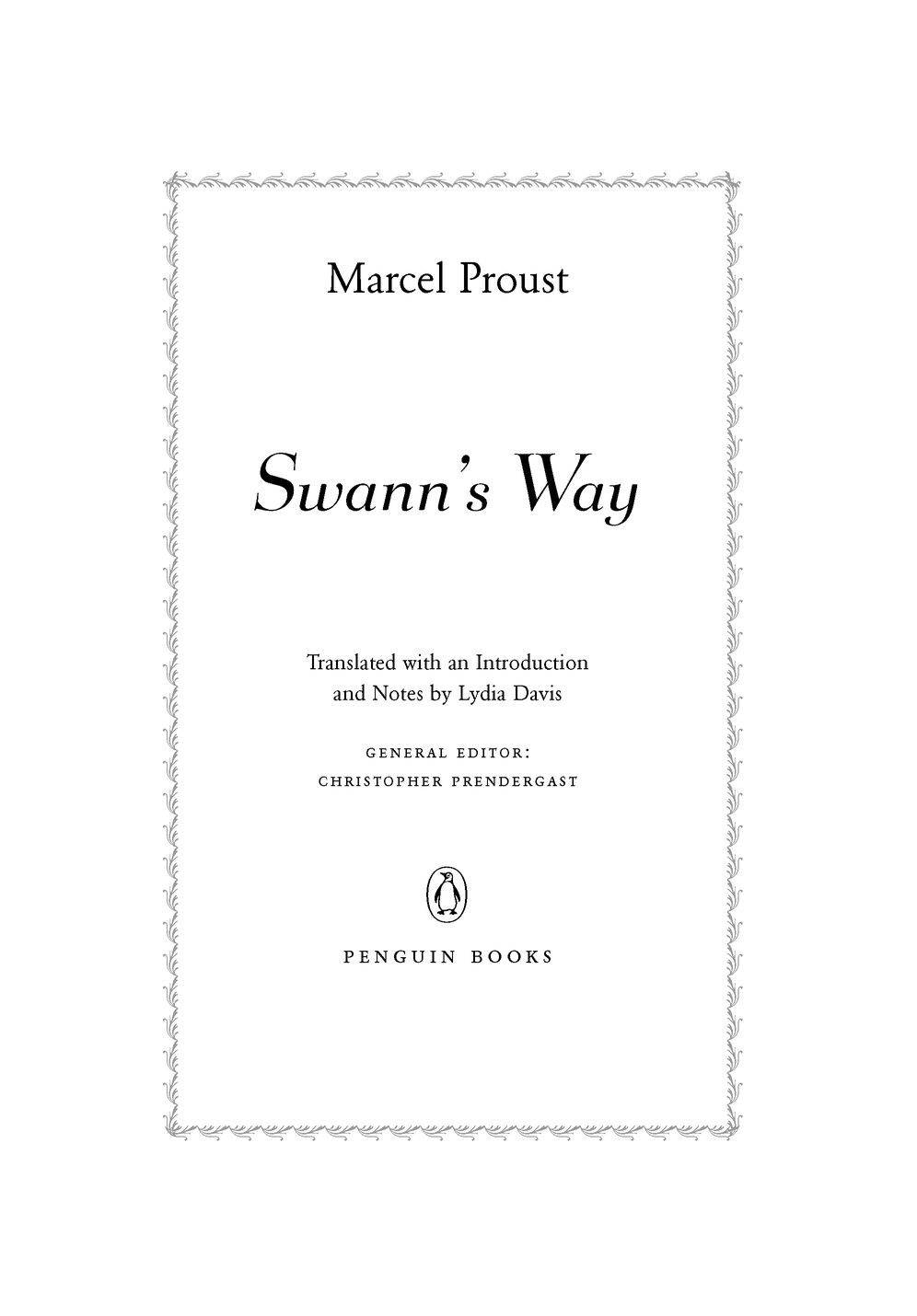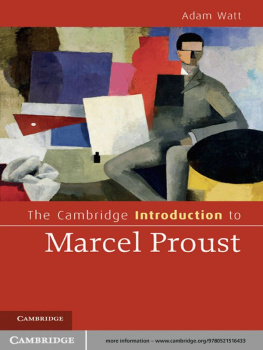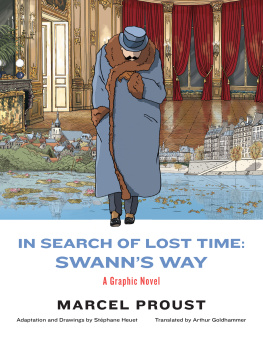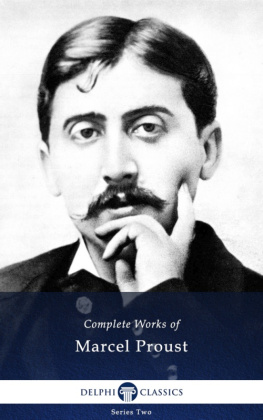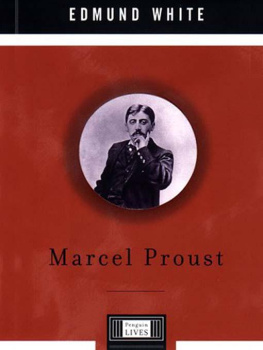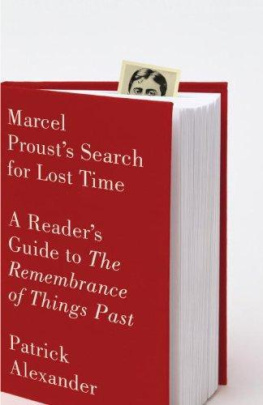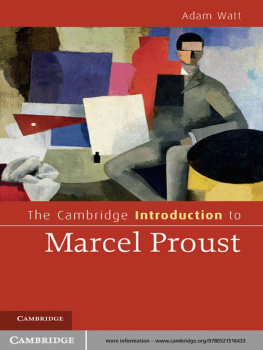Table of Contents
SWANNS WAY
MARCEL PROUST was born in Auteuil in 1871. In his twenties, following a year in the army, he became a conspicuous society figure, frequenting the most fashionable Paris salons of the day. After 1899, however, his chronic asthma, the death of his parents, and his growing disillusionment with humanity caused him to lead an increasingly retired life. From 1907 on, he rarely emerged from a cork-lined room in his apartment on boulevard Haussmann. There he insulated himself against the distractions of city life and the effects of trees and flowersthough he loved them, they brought on his attacks of asthma. He slept by day and worked by night, writing letters and devoting himself to the completion of In Search of Lost Time. He died in 1922.
LYDIA DAVIS, a 2003 MacArthur Fellow, is the author of a novel, The End of the Story, and three volumes of short fiction, the latest of which is Samuel Johnson Is Indignant. She is also the translator of numerous works by Maurice Blanchot, Michel Leiris, Pierre Jean Jouve, and many others and was recently named a Chevalier of the Order of Arts and Letters by the French government. Her essay on close translation of Proust appeared in the April 2004 issue of the Yale Review.
To access Great Books Foundation Discussion Guides online, visit our Web site at www.penguin.com or the Foundation Web site at www.greatbooks.com
Introduction
Many passages from Marcel Prousts Swanns Way are by now so well known that they have turned into clichs and reference points and occupy a permanent place in contemporary Western culture. Scenes and episodes are familiar even to many who have not actually read the book: say Proust and they will immediately think madeleine and tea, if not cork-lined room. Yet confronting the book itself is an entirely different, and individual, experience. One will have ones own way of visualizing the narrators childhood bedtime scene with his mother, his visits to his hypochondriac aunt, his teasing of the servant Franoise, his embrace of the prickly hawthorns, his vision of the three steeples, and his first piece of serious writing. Swanns agonizing love affair with Odette and the narrators youthful infatuation with Swanns daughter Gilberte will be colored by the personal associations of each reader, who will likewise have unexpected memories, recalled by unexpected stimuli, that will enable him or her to identify with the narrator in the most famous scene of all, in which the taste of a tea-soaked madeleine suddenly incites his full recollection of his childhood in the village of Combray and, from this, leads to the unfolding of all the subsequent action in the three-thousand-page novel.
One will find, too, that the better acquainted one becomes with this book, the more it yields. Given its richness and resilience, Prousts work may be, and has been, enjoyed on every level and in every formas quotation, as excerpt, as compendium, even as movie and comic bookbut in the end it is best experienced, for most, in the way it was meant to be, in the full, slow reading and rereading of every word, in complete submission to Prousts subtle psychological analyses, his precise portraits, his compassionate humor, his richly colored and lyrical landscapes, his extended digressions, his architectonic sentences, his symphonic structures, his perfect formal designs.
Swanns Way is divided into three parts: Combray, Swann in Love, and Place-Names: The Name. Combray, itself divided into two parts, opens with the bedtime of the narrator as a grown man: he describes how he used to spend the sleepless portions of his nights remembering events from earlier in his life and finally describes the episode of the madeleine. A second and much longer section of Combray follows, containing the memories of his childhood at Combray that were summoned by the taste of the petite madeleine and that came flooding back to him in unprecedentedly minute and sensuous detail. This first part of the book, having opened at bedtime, closesitself like a long sleepless nightat dawn.
Swann in Love, which jumps back in time to a period before the narrator was born, consists of the self-contained story of Swanns miserable, jealousy-racked love for the shallow and fickle Odette, who will one day be his wife; the narrator with whom we began the book scarcely appears at all.
The third and last part, Place-Names: The Name, much shorter than the rest of the volume, includes the story of the narrators infatuation, as a boy, with Swanns daughter Gilberte during the weeks they play together on the chilly lawns of the Champs-lyses and ends with a sort of coda which jumps forward in time: on a late November day, at the time of the writing, the narrator, walking through the Bois de Boulogne, muses on the contrast between the beauties of the days of his childhood and the banality of the present, and on the nature of time.
The story is told in the first person. Proust scholars have identified a handful of slightly different Is in the novel as a whole, but the two main Is are those of the rather weary, middle-aged narrator as he tells the story and the narrator as a child and young man. The first person, however, is abandoned for shorter or longer intervals in favor of what is in effect an omniscient narrator, as when, in Combray, we witness conversations between his aunt Lonie and the servant Franoise which the boy could not have heard; and most remarkably during nearly the whole of Swann in Love.
The story is told in the first person, the protagonist is referred to several times in the course of In Search of Lost Time, though not in Swanns Way, as Marcel, and the book is filled with events and characters closely resembling those of Prousts own life, yet this novel is not autobiography wearing a thin disguise of fiction but, rather, something more complexfiction created out of real life, based on the experiences and beliefs of its author, and presented in the guise of autobiography. For although Prousts own life experience is the material from which he forms his novel, this material has been altered, recombined, shaped to create a coherent and meaningful fictional artifact, a crucial alchemyarts transformation of lifewhich is itself one of Prousts preoccupations and a principal subject and theme of the book.
The episode of the madeleine, for instance, was based on an experience of Prousts own, but what Proust apparently dipped in his tea was a rusk of dry toast, and the memory that then returned to him was his morning visits to his grandfather. The scene of the goodnight kiss was set, not in a single actual home of Prousts childhood, but in a melding of twoone in Auteuil, the suburb of Paris where he was born, and the other in Illiers, a town outside Paris where he spent many summers. Similarly, the characters in the novel are composites, often more perfectly realized ideals or extremes, of characters in his own life: the annoying Mme. Verdurin is based closely on a certain Mme. X of Prousts acquaintance, but to avoid offending her by too blatantly describing her, Proust attributed her habit of incessantly painting pictures of roses to another character, Mme. de Villeparisis.
What is introduced in this inaugural volume of In Search of Lost Time? As Samuel Beckett remarks in his slim study Proust, The whole of Prousts world comes out of a teacup, and not merely Combray and his childhood. For Combray brings us to the two ways and to Swann, and to Swann may be related every element of the Proustian experience and consequently its climax in revelation.... Swann is the cornerstone of the entire structure, and the central figure of the narrators childhood, a childhood that involuntary memory, stimulated or charmed by the long-forgotten taste of a madeleine steeped in an infusion of tea, conjures in all the relief and colour of its essential significance from the shallow well of a cups inscrutable banality.

